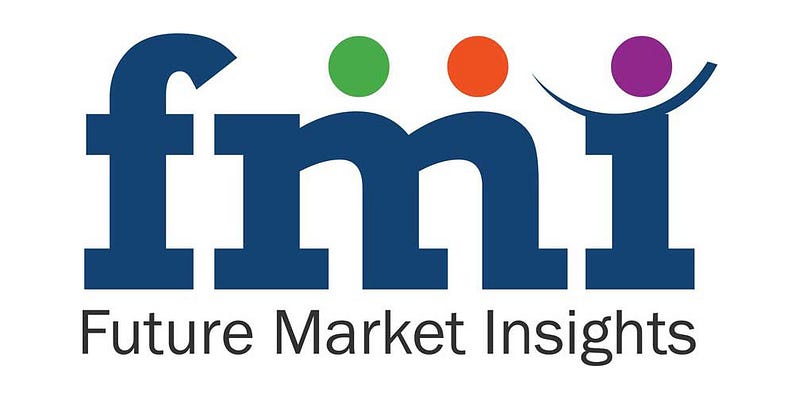Smart Shoe Market is expected to grow at a CAGR of Approximately Over 2022-2032

Close to half a million pairs of smart shoes were sold in 2022, as indicated by a recent study of Future Market Insights (FMI). An average 22% Y-o-Y growth is envisaged for the revenue of smart shoe market, over the coming years. More than 1/3rd of the global sales of smart shoes is accounted by North America, followed by Europe. FMI’s report prompts at significantly high potential for smart shoe market in APEJ.
- To Get a Sample Copy of the Report visit @ https://www.futuremarketinsights.com/reports/sample/rep-gb-9482
2022–2032 Smart Shoe Market Outlook In Comparison To Sales Registered In 2016–2021
The footwear market across the globe had witnessed substantial growth in the past few decades. The increasing adoption of smart footwear in sports as well as the inclination of the population towards luxury and comfort footwear has given rise to the smart shoe market. The market for the smart shoe in sports is expected to gain traction with the betterment in shoe material quality and other characteristics such as water-resistant, and self-lacing shoes.
The increasing awareness regarding the use of synthetic leather in the smart shoe has attracted a substantial population in recent years, alternatively boosting the market for the smart shoe. The increasing fad of sustainable footwear towards the growing significance of environment preservation and opposition to animal cruelty has fueled the market for footwear that is made using synthetic products.
The global market is projected to expand at a significant CAGR during the forecast period. Owing to the fast-pacing trend of smart wearables and increased frequency in the innovation of such products the manufacturers are highly investing in the creating of their products to cater to the increasing needs and demands in the market.
Request Complete TOC Of this Report @ https://www.futuremarketinsights.com/toc/rep-gb-9482
Functionality & Feature Upgrade — Key to Succeed in Smart Shoe Industry
As increasing consumer proclivity for health and fitness related products has been elevating the prospects of smart wearables landscape, it is highly likely that smart shoes will also establish a firmer base in coming years. Functional capabilities of smart shoes tracking the data of running or walking, running routes, calories burned, and activity speed will continue to place smart shoes in today’s desirable products category.
Other important technologies such as GPS navigation are also likely to uplift applicability of smart shoes in the tech savvy age. According to FMI’s analysis, navigation shoes will remain bestselling in the smart shoe market, accounting for more than half of the global smart shoe sales. Step counting smart shoes are also cited as a popular category among consumers of smart shoes.
With leading manufacturers of smart shoes concentrating on enhancing overall customer experience by investing more efforts in improving the cushioning effect, stability, road-holding ability, breathability, shock absorption, and light weight, the report is anticipating more innovation in the smart shoe industry, translating into higher traction for innovative offerings in the smart shoe category.
Key Manufacturers of Smart Shoes Preferring Technological Collaborations, Targeting New Product Launches
The market is dominated by global brands such as Under Armour, Nike, and Puma among others. However, the study highlights that Chinese players have been strategizing on strengthening their market footprint, recently, boosting the level of competition further.
Moreover, relatively smaller, private-label brands are securing their position in the global smart shoe market by offering competitively priced products, which is likely to emerge as a point of concern for industry giants in the long run.
From Nike’s self-lacing sneakers launched a couple of years ago, followed by Li Ning’s smart shoes enabled with military-grade motion sensors, in partnership with Xiomi, product innovation has been the most preferred developmental strategy among leading players.
Over innovation, leading companies in smart shoe market are entering strategic partnerships with tech giants.
The strategic partnership between SR Max (SR Max Slip Resistant Shoes) and Sole Power, LLC to jointly develop self-charging smart work boots, and that between Genesis Rehab Services and Sensoria Fitness for the development of a smart footwear product for diabetes patients, mark some of the recent examples.
Puma’s relaunch of the oldest RS-Computer Shoes (2022) initiated a trend wave of launching older products in the category, with technological and feature upgrade.
The report has a dedicated section for strategic profiles of some of the most prominent players actively competing in the global smart shoe market landscape. A few among them include Puma, Under Armour, Adidas, Li Ning (Xiaomi), Nike, Salted Venture, Digitsole, Orphe, Powerlace, Intellinium, GTX Corp, Lechal Company, EasyJet, and E-Vone.
Buy Now @ https://www.futuremarketinsights.com/checkout/9482
Market By Category
By Product Type :
- Step Counting Shoes
- Positioning Shoes
- Navigation Shoes
By End User :
- Adult
- Children
- Senior Citizen
By Consumer Orientation :
- Male
- Female
- Unisex
- Boys
- Girls
By Application :
- Healthcare Footwear
- Smart Safety Footwear
- Sports Footwear
- Comfort Footwear
By Sales Channel :
- Modern Trade
- Convenience Stores
- Specialty Stores
- Multi-Brand Stores
- Online Retailers
- Other Sales Channel
By Region :
- North America
- Latin America
- Europe
- East Asia
- South Asia
- Oceania
- Middle East and Africa (MEA)

Comments
Post a Comment